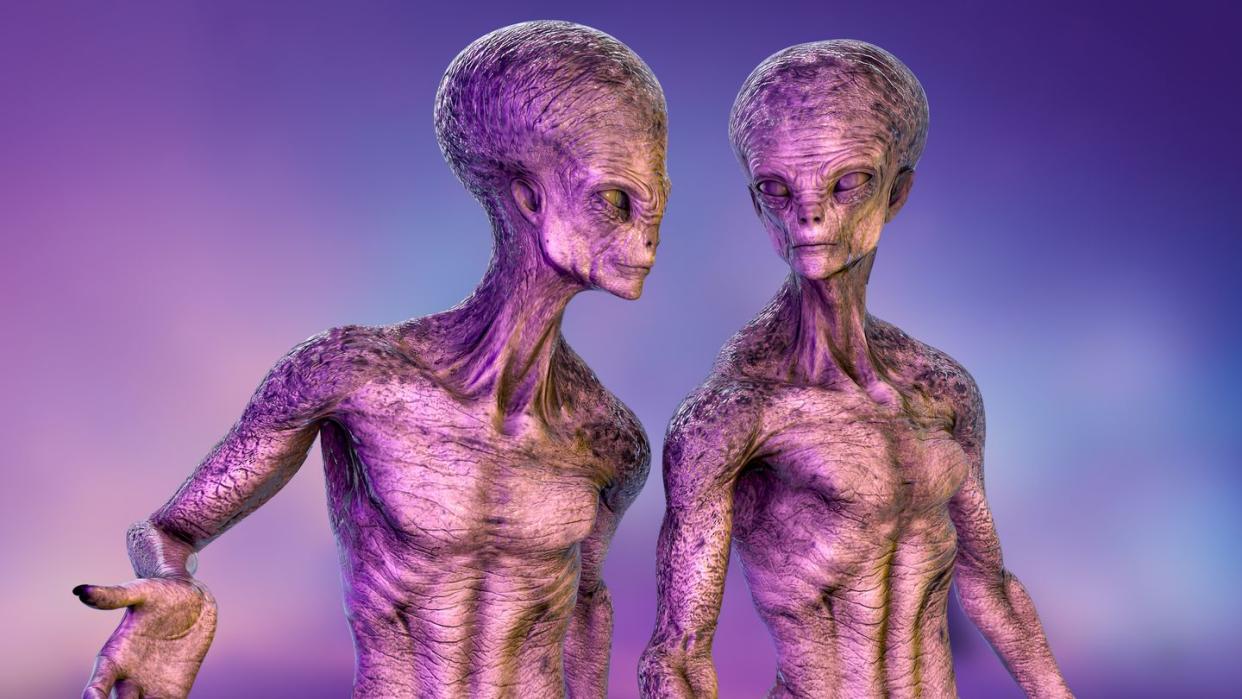A New Study Suggests Aliens Aren’t Little Green Men. They’re Purple People Eaters.

The search for life beyond Earth requires expanding the very definition of what life can be.
Some exoplanets, especially those orbiting cooler red dwarfs, might host purple plant life rather than the green-hue vegetation found on Earth.
A new study from Cornell University discovered that a particular purple “light fingerprint” could be indicative of extraterrestrial life.
While the Earth is often called “the Pale Blue Dot” thanks to its bountiful oceans, most of the planet’s land masses are dominated by the color green. Plants use chlorophyll (which absorbs red and blue light but, reflects green light) to captures solar energy, and use carbon and water to make food through a process known as photosynthesis. While this fourth grade biology lesson outlines the predominant way plant life thrives on our planet, life on other Earth-like exoplanets (especially those orbiting red dwarf stars) could use a different method entirely—one that would turn the whole world purple.
Scientists from Cornell University analyzed how alien plants that rely on infrared radiation for photosynthesis might transform the hues of alien worlds. These kinds of bacteria, which include phototrophic anoxygenic bacteria and photoheterotrophic bacteria, could emit a distinctive “light fingerprint” that could be detectable by upcoming observatories, including the European Southern Observatory’s Extremely Large Telescope. The results of the study were published in the journal Monthly Notices of the Royal Astronomical Society.
“Purple bacteria can thrive under a wide range of conditions, making it one of the primary contenders for life that could dominate a variety of worlds,” Cornell University Ph.D. student Lígia Fonseca Coelho said in a press statement. “They already thrive here in certain niches… just imagine if they were not competing with green plants, algae and bacteria: A red sun could give them the most favorable conditions for photosynthesis.”
To understand the color and chemical signature such a world would emit, Coelho and her colleagues gathered 20 specimens of purple sulfur and purple non-sulfur bacteria from various places around the world—including hydrothermal vents and even ponds near Cornell’s campus. These bacteria rely on low-energy red and infrared right for a photosynthesis-like process, and while purple bacteria might be a biological niche today, some scientists theorize that an ancient Earth was likely much more purple than it is today.
A 2022 study from the University of Maryland explored why plants reflect the color green when technically the Sun emits the most light in the blue-green spectrum. The scientists argued that a light-sensitive molecule called retinal (which first appeared on Earth before chlorophyll) absorbed green light and reflect red and violet—which, to the human eye, would’ve looked purple.
When the molecule chlorophyll evolved on Earth—thanks in no small part to a rise in oxygen levels—the Sun’s green light was already being absorbed by retinal-leveraging plants. So, instead, the molecule absorbed all other available light. Even though the Sun emits less light in that spectrum, chlorophyll were part of a more advanced, efficient system at producing photosynthesis, and Earth’s green hue began to take shape.
But on oxygen-poor exoplanets orbiting cool, red dwarf stars, things might be drastically different. Coelho developed various models of Earth-like planets across a range of wet and dry environments, and many of the simulated “light fingerprints” came back purple.
“If purple bacteria are thriving on the surface of a frozen Earth, an ocean world, a snowball Earth or a modern Earth orbiting a cooler star,” Coelho said in a press statement. “We now have the tools to search for them.”
So, when aliens finally do reach Earth, don’t count on “little green men.” As for flying purple people-eaters... well, now we’re on to something.
You Might Also Like

